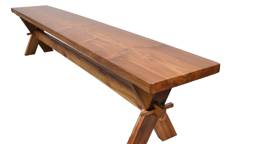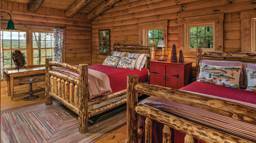1. Surf the Web.
One of the most useful — and accessible — ways to shop is online, notes Woroch. Although there’s often a tangible benefit to shopping in the store, especially when it comes to items such as furniture where you will want to touch and inspect the piece for quality, consumers are recognizing the comparative shopping ability the Internet provides. “Retailers are seeing a ‘scan-and-scram’ technique — [consumers are] coming into the store, asking questions, then buying [the item] online,” she observes, after they look to see how the store pricing compares to online offers from that retailer or comparable sites such as Amazon.com. Although this can hurt the retailer, some have tried to combat the trend by offering price matching, especially during major holiday sales, so it is definitely in your best interest to research purchases online ahead of time to better negotiate pricing. Great deals also exist through flash sale sites, such as One Kings Lane (onekingslane.com) or Rue La La (ruelala.com). Comparable to price comparisons for general retailers, though, check out other outlets to make sure that the price listed is the best offer. “A lot of people will see a designer brand and just assume that that’s the lowest price,” Woroch states, adding that shipping and return costs, and the inability to return certain items should also be factored into your purchase decision. “They don’t look at other prices to compare.” Coupon sites such as CouponSherpa.com and FreeShipping.org can also aid in further reducing prices.
2. Prioritize Your Needs.
Price is not the sole factor in a home furnishing decision; you also need to consider quality and aesthetics to make sure your purchase is worth the price tag — and that you’ll really enjoy it, too. Certain markups may already be built into the price of the item. (Mattresses, for example, tend to be padded with more than just coils and pillow tops.) But opting only for the bargain-basement discounts can dip into the integrity of the products you wind up purchasing, especially items such as furniture. Think about it: Spending a little more upfront on a higher-quality product could save you in the long run because a cheaply made piece will likely require replacement every few years. Woroch suggests researching reviews through outlets such as Buzzillions.com or Consumer Reports to determine the true value of the product (e.g., longevity, functionality, etc.), and help you pinpoint quality brands and models for further shopping comparisons. But, she cautions, “read everything with a grain of salt. [One review] may have been someone with that brand promoting it. Look for everyday reviews.”
Damaged products often offer additional discounts as well. But such markdowns may not be worth it if the cost to repair the item outweighs the discount, Woroch notes. “It’s really important to find out if there have been malfunctions, or if there are scrapes or nicks on furniture,” she states. “If it’s just on the facade and can be repaired, it may be worth your while.” Things that dip into the functionality of the piece, such as a difficulty pulling out a sleeper sofa, may be red flags to pass on that item, she adds.
3. Skip the Warranty.
After dropping several hundred dollars on a major appliance such as a flat-screen TV, protecting your investment with a longer-term warranty may seem like a practical choice. However, because of the rapid depreciation of items such as electronics, you’re better off without it. “You could probably buy an upgraded model for the cost of the warranty,” Woroch notes. Instead, she suggests, “purchase [the item] with a major credit card, which will typically double the manufacturer’s warranty for free.”
4. Consider Used Pieces.
Estate or yard sales, and consignment shops can often yield hidden treasures at bargain prices as people look to offload unused items. These gems can be particularly well suited for cabins, in which many homeowners strive for a more weathered appearance to match the rusticity of the overall structure. “Bed frames, dressers, armoires — you don’t need to buy new,” Woroch advises, noting estate sales in higher-end neighborhoods will typically feature higher-quality pieces. “You can buy old ones and refurnish them yourself, and buy new hardware. You can really save a lot that way.” Consider consignment shops and similar outlets for your own unused items as well, she adds, because you can get credit at those stores to use toward new purchases.













